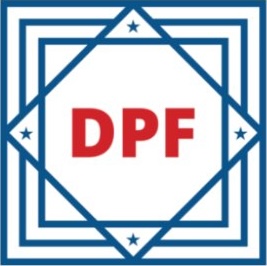Propeller Trust Center
Security and trust are at the heart of everything we do. Your data’s safety and privacy are part of everything we do. From daily workflows to organizational processes — security, reliability, and compliance are baked in.
See security controls
Compliance
SOC 2 Type 1
Propeller has received SOC 2 Type 1 certification.
SOC 2 Type 2
Propeller is in the process of obtaining SOC 2 Type 2 certification and expects to achieve this within the year.
GDPR
Propeller is fully GDPR compliant

Data Privacy Framework
Propeller is officially DPF certified
FAQs
Where does Propeller process and store data?
All data submitted to and from the Propeller Platform is encrypted and transmitted securely over HTTPS using TLSv1.2 or higher, with a 128-bit cipher or higher, depending on the client. All internal transfers of data between Propeller services are similarly protected by encryption.
Once submitted, all data is stored securely in AWS with access controls preventing unauthorized access. S3 buckets are configured to be private by default and access keys or pre-signed URLs are required to access the data. Similarly, databases are password protected and may be accessed from only whitelisted IP addresses. Access and permissions to alter or delete data is only delegated where necessary and based on the principle of least privilege.
All data for processing or display is uploaded to an S3 bucket located in the Australian AWS region. From here the data is transferred, with encryption, to on-premises or AWS servers in Australia or Singapore for processing. These servers store this data, with encryption, until it is no longer required for processing.
Any outputs resulting from processing are pushed to an S3 bucket in the AWS region closest to the customer, which may be in one of several sites across the globe. Available storage locations that can be used to store customer data include India, South Korea, Singapore, Australia, Japan, Canada, Germany, Ireland, England, France, South America and the United States of America. Propeller does not store any customer data in Russia or China. This is done to improve delivery performance when customers request the data. Scale tier customers can choose which data center their geospatial data is stored if they need to meet data sovereignty requirements.
Metadata and other data entered into the platform are stored in RDS databases located in a US-based AWS region.
All data is encrypted at rest, including in queues, databases, data volumes, and S3 using AES256 encryption. Encryption keys are created, managed, and secured using the AWS Key Management Service (KMS). We automatically rotate keys yearly.
Resources
Security white paper
Learn about the security measures we put in place to protect your data
Terms and Conditions
Privacy policy
SOC2 Type 1 report - 2025
Consensus Assessments Initiative Questionnaire (CAIQ)
Penetration test report - 2024
Penetration test report - 2022
Penetration test report - 2023
Vulnerability and patch management policy
Incident response plan
Monitoring
Continuously monitored by Secureframe
Propeller employs the following security controls to ensure the safety and privacy of your data. Compliance with these controls is continuously monitored and displayed here.
Subprocessors
AWS
Cloud computing services
Agave
Data aggregation and reporting
Aircall
Cloud-based phone system
Appcues
In app. messaging (User onboarding and engagement)
Chargebee
Subscription billing software
Gainsight
Customer success platform
Hubspot
Sales and Marketing CRM
Intercom
Customer messaging platform
Segment (Twilio)
Communication APIs
